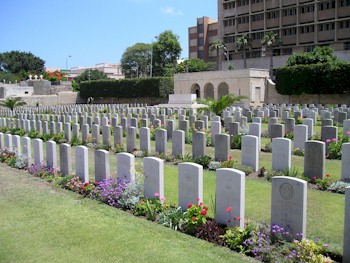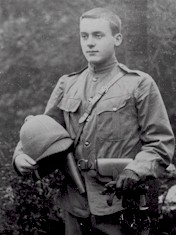|
|
| Home Topics Memorials Miscellany Transcripts References Family History Glossary Latest Beeston Blog About us | Site Search |
|
Both Frederic and Henry served in South Africa in the Boer War - the photograph shows Frederic at this time3 - and both quickly joined the Nottinghamshire Yeomanry (South Notts Hussars) when war was declared in 1914. While Henry went on to be commissioned in the Midland Field Ambulance and eventually a Captain in the Army Remount Service, Frederic stayed with the South Notts Hussars and was commissioned as a Second Lieutenant on 27th November 1914. The South Notts Hussars, with the Sherwood Rangers, were mobilized on the day the war began. Later, as the Notts & Derby Mounted Brigade, under the Nottinghamshire Yeomanry Brigade, 1st Mounted Division. The first eight months of the unit's training in England, were spent in the "South East Stoke and the Norfolk" area. In April 1915 the division sailed from Avonmouth for Egypt, afterwards landing at Suvla Bay in Gallipoli serving in the trenches as a dismounted Division. In December 1915 the division returned to Egypt and January 1916 the 2nd Mounted Division was broken up. During February 1916, the South Notts Hussars, as part of 7th Mounted Brigade, headed for Salonica. On 26th June, Lieutenant Piggin was in "D" Squadron who whilst patrolling towards the village of Butkova Zuma off the Struma river found that the railway east and west of the village was held by strong enemy posts, who allowing the advance guard of the Hussars to approach to within 100 yards suddenly opened fire, Private Kirkland's horse was shot down, Private Phillips at once rode to his comrade, and finding that he was wounded gave Kirkland his own horse and was returning back on foot, Lieutenant Piggin took out another horse with him, and brought Private Phillips safely back. This gallant little episode took part under heavy fire about four hundred yards from the enemy. In July the South Notts Hussars were near the village of Julah when a serious outbreak of malaria struck the unit resulting in some 300 men being hospitalised. On 1 August 1916 Frederic Piggin was promoted to Temporary Captain and, in November 1917. He was to receive the Military Cross while in Palestine while temporarily in command of "D" Squadron, fighting the Turks at Bersheeba, and mainly instrumental in capturing two Turkish Field Guns, four Ammunition Limbers and other carts; 117 prisoners were also captured by the same Squadron. The guns were made unserviceable and thrown into a deep gully. June 1917 saw the South Notts Hussars return with the 7th Brigade to Egypt and join the "Desert Mounted Force". In April 1918, the South Notts Hussars left the 7th Mounted Brigade and, with the Warwickshire Yeomanry, formed the "B" Battalion Machine Gun Corps. Orders were received on 22nd May that "B" Battalion Machine Gun Corps, the Bucks & Berks Machine gun contingents and drafted reinforcements were to embark on the following day for France. Accordingly, the battalion numbering 54 Officers and 984 other ranks were conveyed by train to the docks and embarked on the "Leasowe Castle"5 with two squadrons of the South Notts and two squadrons of Warwickshire Yeomanry. As soon as embarkation was complete, the ship was taken out of harbour and anchored, remaining until 3pm on 26th May, when she sailed for France as one of a convoy of six transports, accompanied by destroyers and trawlers. On route to Marseilles the convoy steamed in "Line Ahead", later coming into "T" formation with four ships in leading line, of which the Leasowe Castle was third in line. All went well until midnight on the 26th May but at 12.25am on the 27th about 100 miles from Alexandria, the Leasowe Castle was struck by a torpedo on the starboard side, a little forward of amidships. The ships engines were immediately stopped with the troops parading at their stations, boats were lowered and rafts thrown overboard. A Japanese destroyer stood by while the remainder of the convoy continued on their way at full speed and rapidly disappeared. During the lowering of boats, one was found to be stove in by the force of the explosion, but the remainder were launched in quick time, transporting whatever could be saved via boat to the destroyer and picking up men who were swimming. About 1.45 am H.M. Sloop "Lilly" appeared, having turned back from the convoy to assist in the rescue. Suddenly, about 2am, a bulkhead in the after port of the Leasowe Castle gave way and, with a loud rending noise, the ship sunk rapidly by the stern, the bows rearing straight on end. Of the 3,000 plus troops and crew 101 people died, including Captain Holt the ship's captain and eight of the crew; in this tragedy. Captain Piggin along with 50 other officers and men from the South Notts Hussars were drowned. Chatby Memorial, Alexandria - Chatby is a district on the eastern side of the city of Alexandria. The Chatby Memorial is situated within the Chatby Memorial Cemetery and stands at the eastern end of the Cemetery. In March 1915 the base of the Mediterranean Force was transferred to Alexandria from Mudros and the city became a camp and hospital centre for Commonwealth and French troops. Among the medical units established there were the 17th, 19th, 21st, 78th, and 87th General Hospitals and No 5 Indian Hospital. After the Gallipoli campaign of 1915, Alexandria remained an important hospital centre during later operations in Egypt and Palestine and the port was much used by hospital ships and troop transports bringing reinforcements carrying the sick and wounded out of the War Theatres. More than 700 of those commemorated on the memorial died when vessels were torpedoed or mined. Officers and men of the merchant services lost in these incidents are commemorated on appropriate memorials elsewhere. Those commemorated include the 83 officers and men who died when the "Leasowe Castle" was torpedoed and sunk on 27 May 1918, off Alexandria.6 He is also commemorated on his parents' granite headstone in All Saints Churchyard, Dale Abbey, Derbyshire7 : In loving memory of Annie wife of Richard S Piggin of Beeston House Beeston Notts and daughter of the late Thomas Hancock of Boya Grange Dale Abbey who died Oct 2nd 1924 in her 78th year Footnotes 1The photograph of Chatby Memorial is from the Commonwealth War Graves Commission website. (http://www.cwgc.org) 21911 Census of Beeston, Notts - Piece 20428 RD429 SD3 ED3 Schedule 448 - Beeston House, 10 West End, Beeston. 3The photograph of Frederic taken during his Boer War service is from http://www.soldiersofthequeen.com/ with the kind permission of its Curator. 4He had been promoted to Temporary Lieutenant on 12 November 1915 5The Union Castle liner Leasowe Castle was built for Greek owners as the "Asilissa Sophia" but was never delivered to them. She was taken over by the British government in 1917. Soon after going into service she was torpedoed off Gibraltar on April 20th 1917, but managed to reach port and effect repairs. 6The description of the Chatby Memorial is based on that on the Commonwealth War Graves Commission website. (http://www.cwgc.org) 7As transcribed by Ilkeston & District Local History Society and seen at http://www.ilkestonhistory.org.uk/Memorial%20Inscriptions%20DA.htm Here and in the Commonwealth War Graves Commission records, his first and middle names "Frederick William" appear to be slightly at varience with those by which he was registered at birth "Frederic Williams" (which we have otherwise used). It seems significant that "Williams" was his maternal grandmother's maiden name. |
|
|||||||||||
|
|
|||||||||||||

 Frederic Williams Piggin was born in 1877, the eldest son of Richard Salt Piggin & Mary Anne (know as Annie, née Hancock) of Beeston House, 10 West End, Beeston, Notts. Richard, the son
of Frederick Piggin, a Stapleford butcher and farmer, and his wife had moved to High Street, Long Eaton soon after their marriage in 1870 and had established themselves as butchers and farmers. It
was there that Frederic, his brother Henry Arthur (Harry) and sister Elizabeth were born. The family moved to Beeston shortly before its appearance there on the 1911 census and establised a riding stables on land
that was known locally as the Robinettes. Frederic and his brother and sister, all still unmarried, provided riding instruction.2
Frederic Williams Piggin was born in 1877, the eldest son of Richard Salt Piggin & Mary Anne (know as Annie, née Hancock) of Beeston House, 10 West End, Beeston, Notts. Richard, the son
of Frederick Piggin, a Stapleford butcher and farmer, and his wife had moved to High Street, Long Eaton soon after their marriage in 1870 and had established themselves as butchers and farmers. It
was there that Frederic, his brother Henry Arthur (Harry) and sister Elizabeth were born. The family moved to Beeston shortly before its appearance there on the 1911 census and establised a riding stables on land
that was known locally as the Robinettes. Frederic and his brother and sister, all still unmarried, provided riding instruction.2